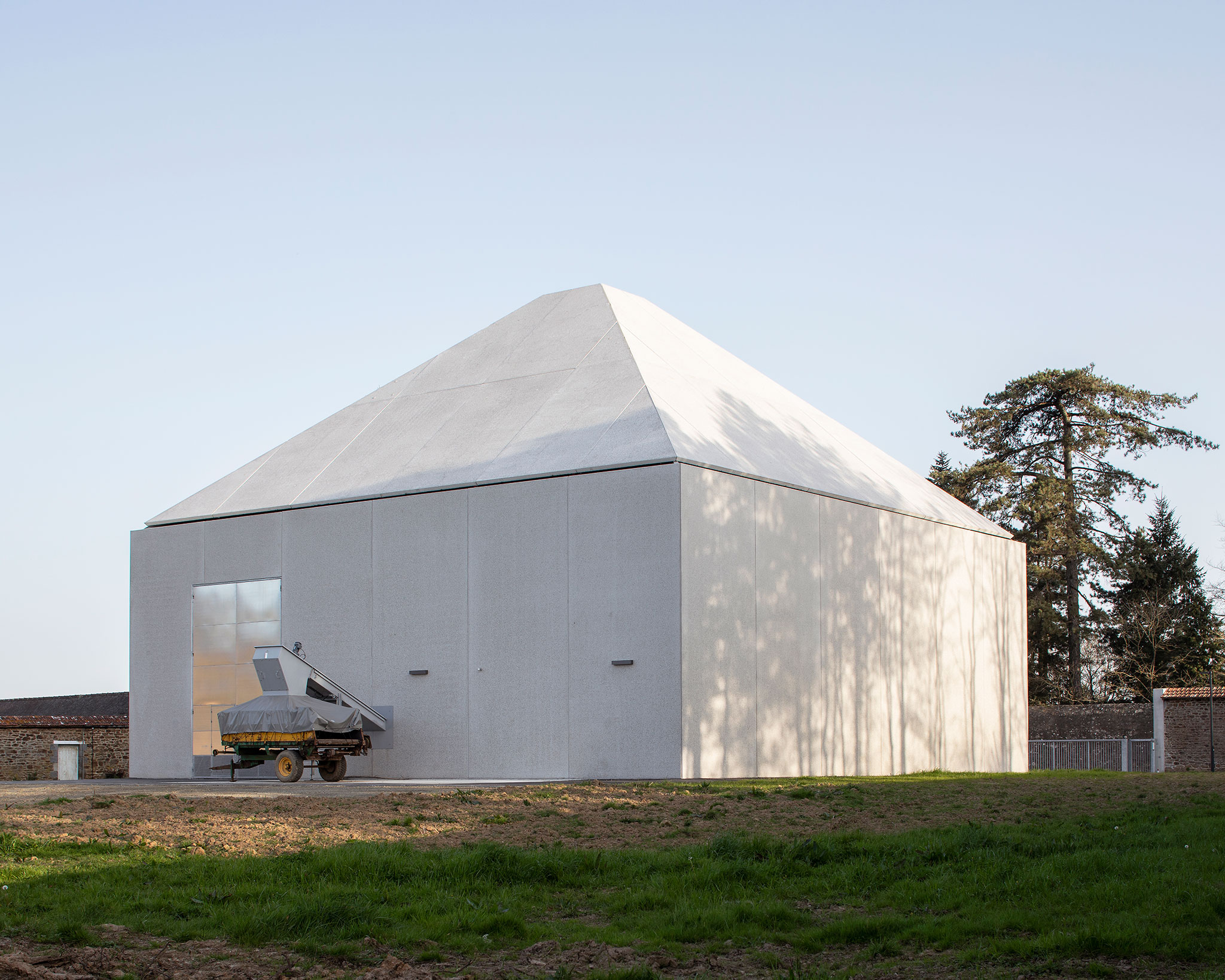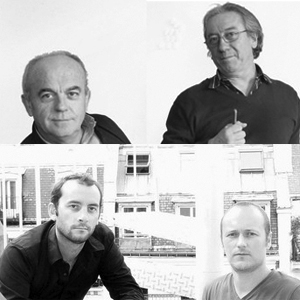The aesthetic objective of the project was to link it directly to the heritage of the site while carrying out its technical function. ALTA Le Trionnaire - Le Chapelain devised a single homogeneous, monolithic volume that provides a scale-free abstraction capable of recalling the spire of the chapel of the congregation building it serves.
The design is a cube surmounted by a pyramid of polished concrete used for the roof and facades, with openings for galvanized steel doors for ventilation and access. Machinery, boilers, and even chimneys are hidden in the space provided by the pyramidal shape of the roof, revealing only the white smoke rising skyward from the ventilation in the center.

Boiler room by ALTA Le Trionnaire - Le Chapelain. Photograph by Gaëtan Chevrier.
 Boiler room by ALTA Le Trionnaire - Le Chapelain. Photograph by Gaëtan Chevrier.
Boiler room by ALTA Le Trionnaire - Le Chapelain. Photograph by Gaëtan Chevrier.
Description of project by ALTA Le Trionnaire - Le Chapelain
The new boiler room at Saint Pern is intended to improve the heating system of the headquarters of the Little Sisters of the Poor and the adjacent EHPAD and will be managed by the congregation.
The project is part of an existing site with a strong heritage which is solidly anchored in its location. Its emblematic Breton architecture is hidden behind the sites monumental stone walls.
This technical addition is integrated within the existing architectural and historical context and reflects the details and aspect of the older buildings.
Located in the middle of a field used partly as an orchard, it is necessary for the building to blend well with the surrounding landscape. We therefore chose to emphasize the quality and durability of the materials used as a reflection the existing elements. The example being the different types of stone namely, granite, schist and gneiss which are all omnipresent and which were sourced in the local quarry. The aspect of the stone found at the quarry of Lanhélin is to be seen in the granite of the courtyards of the Novitiate and the Chapel and is the starting point for our project. The concrete envelope of our project was then imposed on the site to dramatically respond in a form of dialogue with the surrounding architecture.
The project was developed through an enriching and constructive exchange with the Little Sisters of the Poor, leading to the choice of a contemporary architecture, a concrete volume, which recalls the heritage of the site.
The objective is to read a building which is linked directly to its heritage while also fulfilling its technical function: a single homogeneous and monolithic volume that confers an abstraction without scale capable of recalling the highest point of its neighbour, the spire of the chapel.
The design was developed, a cube surmounted by a pyramid with the use of a single dominant material, polished concrete, for both roof and facades. A subtle relief is given to the façades through the door and ventilation openings which are manifested in galvanized steel revealing the raw nature of the concrete. Their sometimes-monumental scale breaks up the overall visual impact of the building.
We made it a point of honor to conceal the buildings technical side, the wood and oil-fired boilers and even the chimneys are completely hidden in the roof space. The only thing to betray the buildings’ actual function is the white smoke curling skyward.
The implantation of the building results from a precise analysis of the existing site. In line with the Novitiate on the East-West axis and centered on the parcel on the North-South axis, its position on the site gives it its own identity and a certain religious symbolism. The huge galvanized barred gate located in the existing perimeter wall, becomes the main access to the boiler room and gives an allegorical perspective.



































































